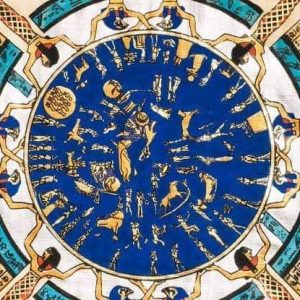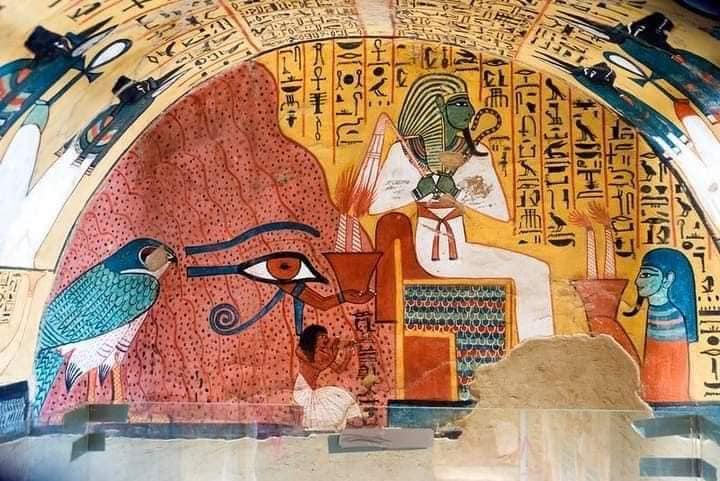
Facts about the sciences of observing the constellations, houses and stars in the sky, astronomers in the Egyptian civilization (Part One)
If they wanted to know the future, people in ancient Egypt used to go to the temple of a certain deity and sleep in it, then tell the priest who interprets dreams about the course of this dream. At that time, the priest interprets the dream according to his secret knowledge of the origins of this science.
Perhaps it would be better to return to Serge Sonron’s study of dreams and their interpretation in ancient Egypt, published in Paris 1959, to see the details of this rare field. On the other hand, the Chester Beatty Papyrus No. 3 preserved in the Museum of England informs us of the texts of what we can call (the book of dreams). This book consists of a set of fixed rules for interpreting dreams. Each dream consists of three fields:
The text of the dream: where the text says – If a person sees himself in a dream, this is what
Judging the dream: where the text says – good or bad.
Dream Interpretation: Where the text says – it means
The following are some examples of the interpretation of dreams by the ancient Egyptians:
If a man sees himself in a dream:
And he opens the wine: Good: That means he will open his mouth to speak.
Sitting on a tree: Good: It means destroying all his tragedies.
And he kills a goose: Good: means killing all his enemies.
He visits Bosiris: Good: it means that he will have a long life.
He looks into a deep well: bad: means he will be put in prison.
Takes fire: bad: means that he will kill or be slaughtered.
Looks at a dwarf: bad: it means that half of his life will be taken from him…. etc.
Another translation of some passages from the Chester Beaty Papyrus No. 3 dates back to the Ramesside era. Its vocabulary and expressions indicate that it dates back to the Middle Kingdom, as seen by historians. Some trace some of these expressions back to the Roman era.
Whatever the case, the Egyptians considered dreams as symbolic divine messages, and specialized priests had to interpret them because they fell within the gods’ plans.
Observe the constellations, houses and stars:
The Egyptians had a different system in observing the sky astronomically, as the names and locations of their constellations differed from others, and they had a map of the sky different from what the ancient nations knew.
Some of the sky drawings in some Egyptian tombs showed the shapes and names of the Egyptian constellations, some of which we mentioned. Still, they set another system for dividing the sky based on dividing it into 36 places, ranks or constellations, and each house contains ten degrees. These houses had different names, such as:
south visor
north visor
The god who crosses the sky…etc
Each house consisted of ten days or a decade. The houses started from a tropical region that begins with the Yemeni poetic planet (Cyrus, Sotis, Speedt), the first planet or star. She was called (Lady of the Year) because she is the first star to appear at the beginning of the year in the flood month.
The degrees that “appear in the heavenly images or drawings in the tombs were associated with sacred biblical legends, and these mysterious texts for us must be the same for the Egyptians themselves, because the Cadelsberg Papyrus, written a thousand years after the texts that accompanied the funeral star drawings, is an interpretation and interpretation of it.
The original ancient text written in a priestly language is accompanied by a literal translation in the popular language and sometimes with an interpretation that indicates its meaning. Sometimes, the usual hieroglyphic signs are replaced by symbolic forms that conceal the true meaning from the unknowing reader.
The Egyptians conceived the stars and planets as divine beings as well and differentiated between them as follows:
The stars: They used to call it (that never sets), which is the group of stars of the polar star that shine in the sky, and they depicted them as forming the crew of the sun’s ship during its journey during the day, and it is not seen during the day because the sunlight blocks it. As for the stars that the Egyptians spotted, they are many, and they were distinguished from the car planets, which were called (the stars that never rest), and the most important of these stars were the (polar stars), which were seen every year.
The planets: they were called (the one that never gets tired), that is, the five moving planets that appear in the east and from the night sky, and they disappear one after the other on the western horizon when the sun god moves away in the hidden part of the universe.
These are the names of the five planets (other than the sun and the moon) are:
1- Venus: the morning star 2- Jupiter: the radiant star.
3- Saturn: Horus Taurus. 4- Mars: Horus the Red. 5- Mercury.
The Egyptian tower system settled in two forms (the ancient Egyptian system and the traditional system).
The Egyptian system will address:
Its duration is the god who patronizes the name of the sign
9/27-8/29 God of wisdom, writing, and magic, Thoth 1
10/27-9/28 Sunrise God Horus 2
11/26-10/28 Royal Snake Symbol of Wisdom and Knowledge Widgets 3
12/26-11/27 God of War and Competition Sekhmet 4
1/25-12/27 The treasure keeper whose shape turns according to his place the Sphinx 5 أبو
2/24-1/26 God of sunlight and air Shu 6
3/26-1/25 Mother Goddess Lady Ritual of Mysteries Isis 7
4/25-3/27 God of fertility and the underworld Osiris 8
5/25-4/26 God of the sun and urban life Amon (Amen) 9
6/24-5/26 Goddess of Heaven and Earth Hathor 10
7/24-6/25 Bird of Life, Energy and Resurrection Phoenix 11
8/28-7/25 The god of death, the underworld, and the necropolis of the dead Anubis 12…


Comment (0)